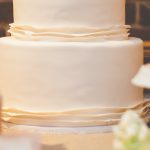Western wedding ceremonies come with a number of traditions, from the presence of a ring bearer to the garter toss and even saving the top tier of the wedding cake for a year later. Similarly, different cultures across the world have their own interesting wedding traditions.
Being aware of different cultures and their traditions helps us be more accepting of others and saves you from the embarrassment of attending a wedding of a different culture and having no clue what’s going on!
To help you enlighten yourself, here are a few traditions and customs of Chinese weddings:
Collecting the Bride
Prior to the wedding, the groom decorates the car and collects his bride in a lively procession. As the groom begins his journey to the bride, firecrackers are set off, and drums and gongs are banged. A young child often leads the procession, along with the groom. This symbolises future children for the couple.
The procession walks with lanterns and banners and musical instruments are payed too.
Wedding Dress
It is tradition for a Chinese Bride to wear a red dress, known as a ‘qipao’, and to hide her face with a red veil. Red is a symbol of happiness, good luck, and a prosperous future.
Many brides today have both a white bridal gown and a red wedding dress.
The banquet
The banquet is a lavish affair. At the beginning of the dinner, the bride commonly changes into her traditional wedding dress. In the past, both sets of parents throw separate feasts however these days the feasts are commonly combined. The feast comes with about six courses each. The bride and groom both change clothing between the 3rd and 6th courses.
At the banquet, guests sign their names in a book or on a scroll when they present their gifts.
Arriving home
Once again, firecrackers are set off as the newly married couple arrives at their new home. A red mat is laid out so that the bride’s feet do not touch the floor as she makes her way into the house.
Chinese Tea Ceremony
The couple’s families are formally introduced during the Tea Ceremony, at which they commonly drink Tsao Chün, a Chinese Tea. After everyone’s cups are empty, the couple is given a red envelope which is considered to be lucky and is filled with money and at times jewellery too.
Tea is served by the newlyweds, as this ceremony takes place either immediately after the wedding or the next day.
Image: Instagram /oliviabuckleyinternational




















